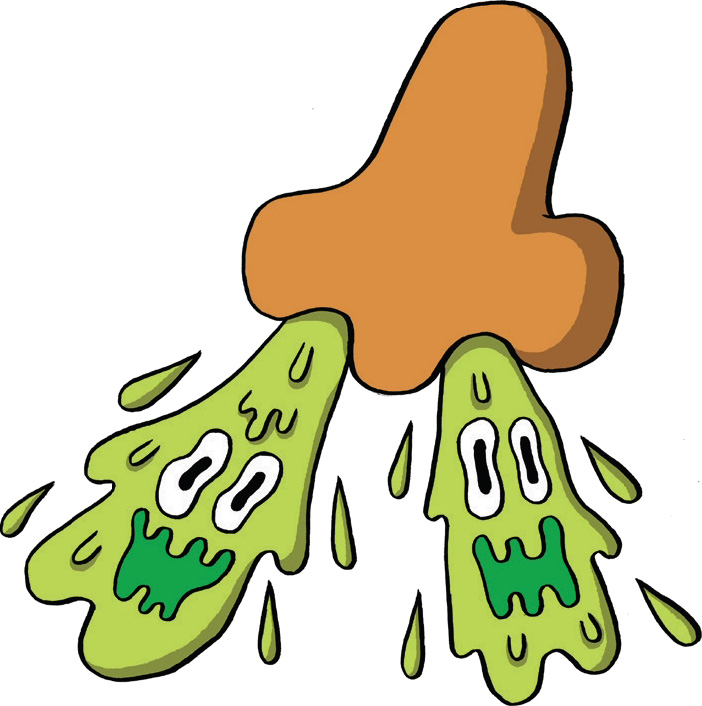

Nose, beak, snoot, schnozzle, hooter, sniffer, honker, schnoz, smeller, snout . . . call it what you want. Noses come in all sorts of different shapes and sizes, but always in the same place with the same purpose. Not only is it the first stop on the ol’ respiratory highway, but when it comes to smell, and even taste, the nose knows!
So how do we smell? For something to be smelly, it needs to have tiny particles that fly off when you inhale. These tiny particles are called odorants, and they pass through your nose and land on different odor receptors. These odor receptors then send high-speed signals to your brain, telling you what you’re smelling. You have roughly 400 different kinds of odor receptors in your nose.
When it comes to our olfactory system, taste and smell make quite the perfect pair. While many of us might credit the tongue for helping us experience taste, it’s the nose that is working hard behind the scenes to make it all possible.
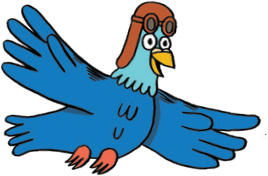
Step 1: You’re eating a big ice cream cone.
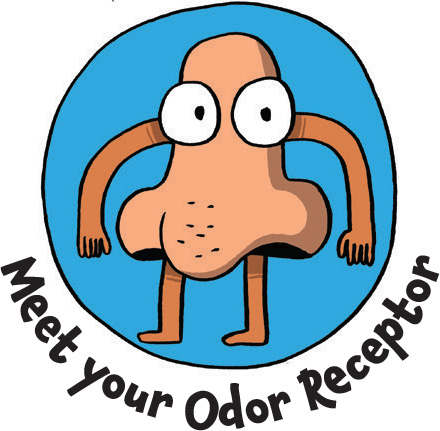
Step 2: The ice cream releases teeny-tiny chemicals that travel up to your nose.
Step 3: Little olfactory receptors, or sensors, in your nose wake up. Rise and shine!

Step 4: The olfactory sensors in your nose get in contact with your taste buds (Incoming! Food odor detected!) to create the true flavor of that ice cream cone.
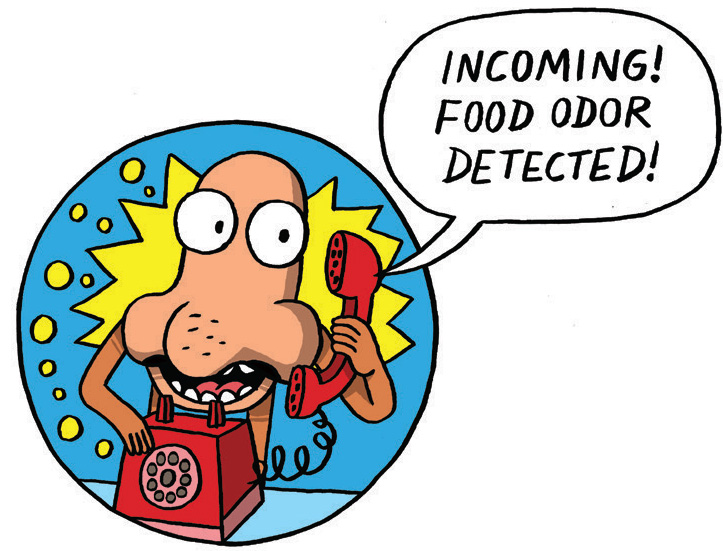
Step 5: The olfactory receptors in your nose and the taste buds in your mouth send a joint message to your brain to say, “HEY BRAIN! YOU JUST ATE ICE CREAM!”
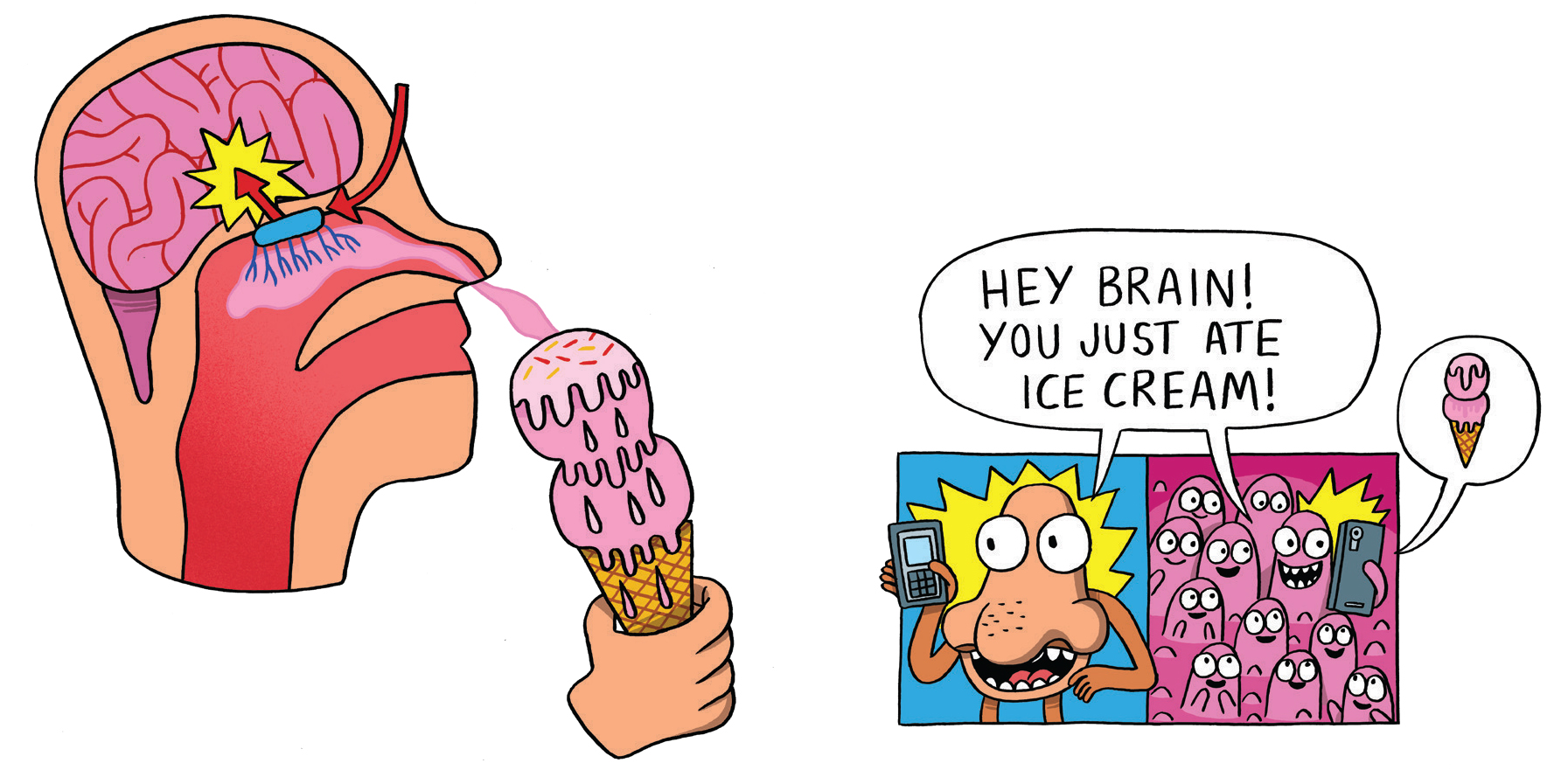

Nostrils—the finger-size holes in your nose. (Just because you can fit your fingers in there doesn’t mean you should!)
Septum—made out of bone and cartilage, the septum is the little bendy wall between your nostrils.
Nasal cavity—this is a good kind of cavity, so please don’t have it removed.
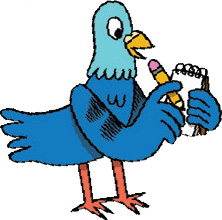
The floor of your nose is the roof of your mouth!

Your nose never stops growing!
Until the age of three or four months, a newborn baby can breathe only from its nose.

On average, men have longer noses than women.
In New Zealand, the Maori people have a tradition of pressing their noses together as a way of saying hi. This is known as the hongi.
Your nose makes about one quart of snot every single day, and you swallow most of it!
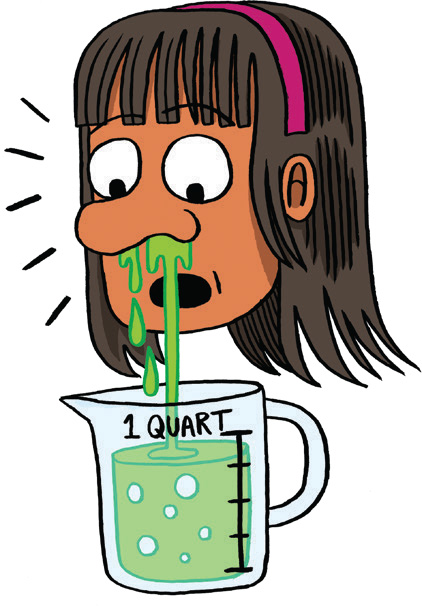
If you’ve ever taken the time to examine your nose in a mirror, you might have noticed that your nostrils contain teeny-tiny hairs. They don’t require shampoo, soap, or even haircuts (at least not yet), and you definitely can’t braid them or pull them into a tiny nose-hair bun. So what’s the point?! Why do we even have these nose hairs in the first place?
Nose hairs actually play a pretty important role in keeping you healthy. Day and night, these little hair goalies guard your nostrils, ready to trap any dirt, viruses, bacteria, and toxins that try to infiltrate your body. Sometimes you’ll send these bad bits back into the universe by sneezing or by blowing your nose. Other times, they’ll join forces and become . . . boogers!
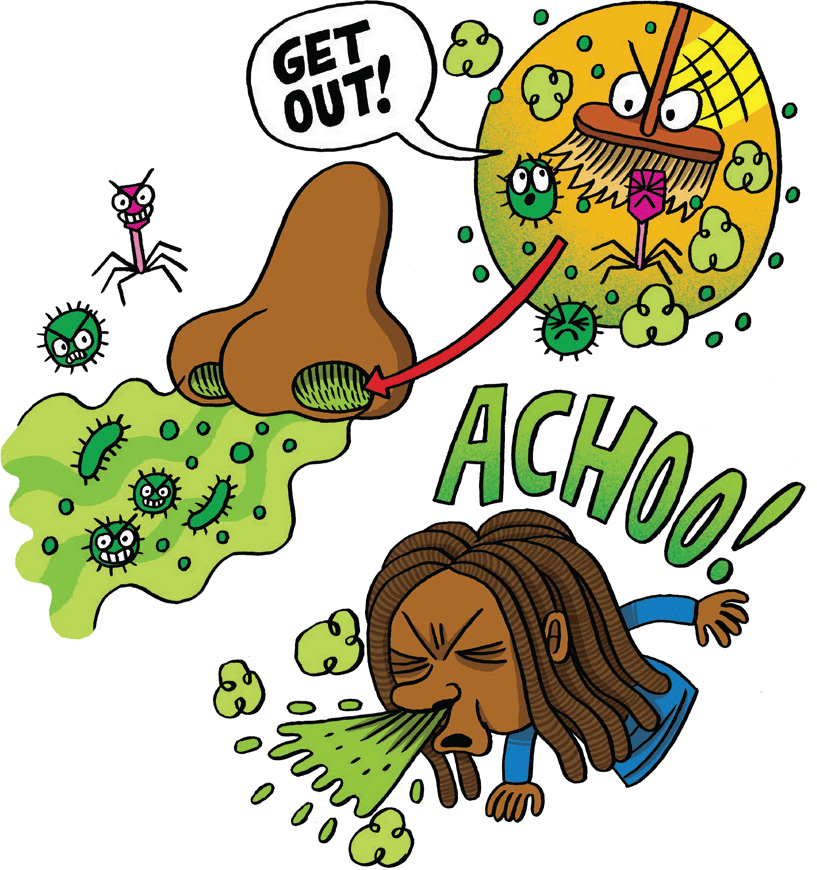
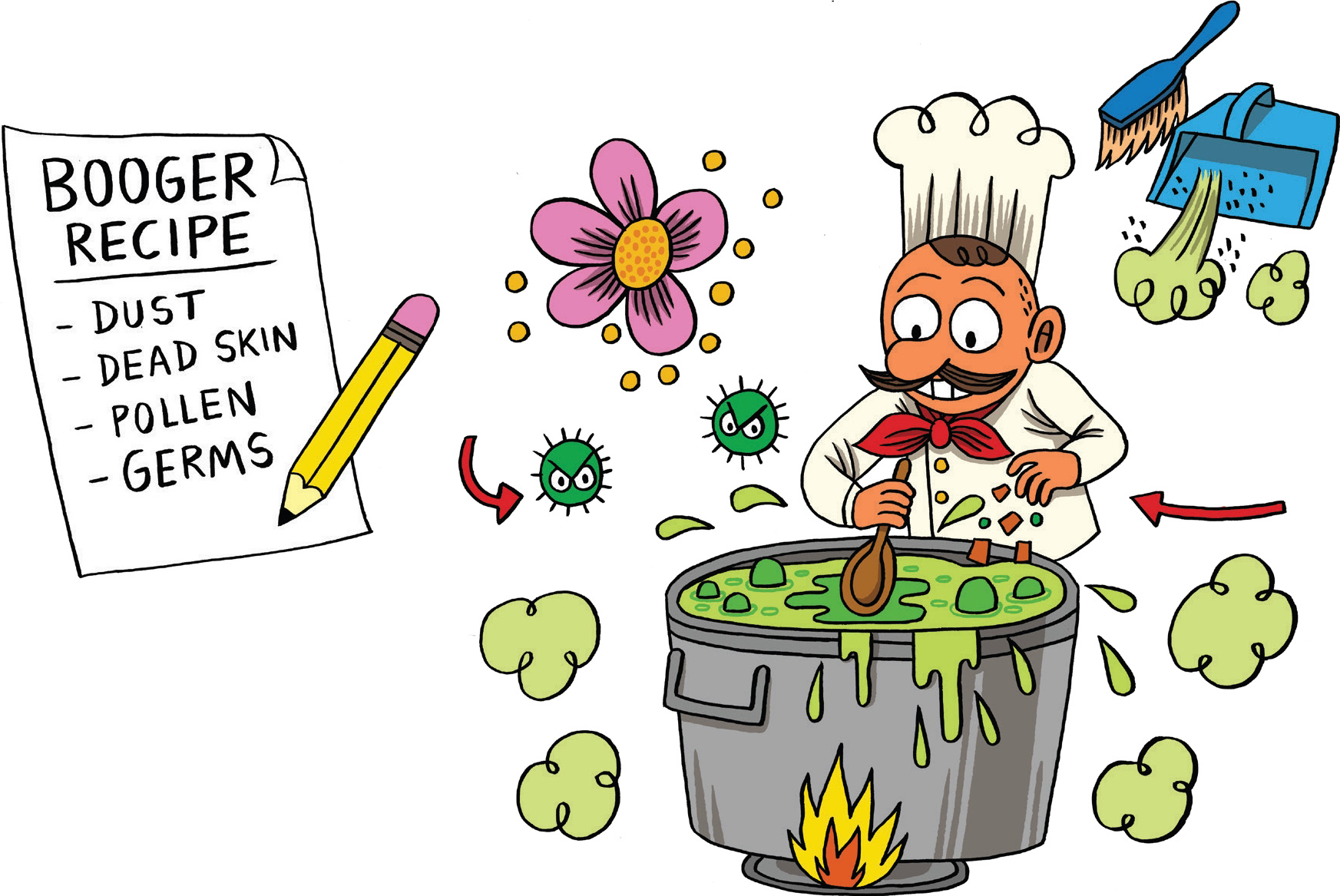
Boogers (Also Known as Nasal Mucus, Which, Let’s Be Honest, Is Not That Fun to Say), AKA Dehydrated Snot
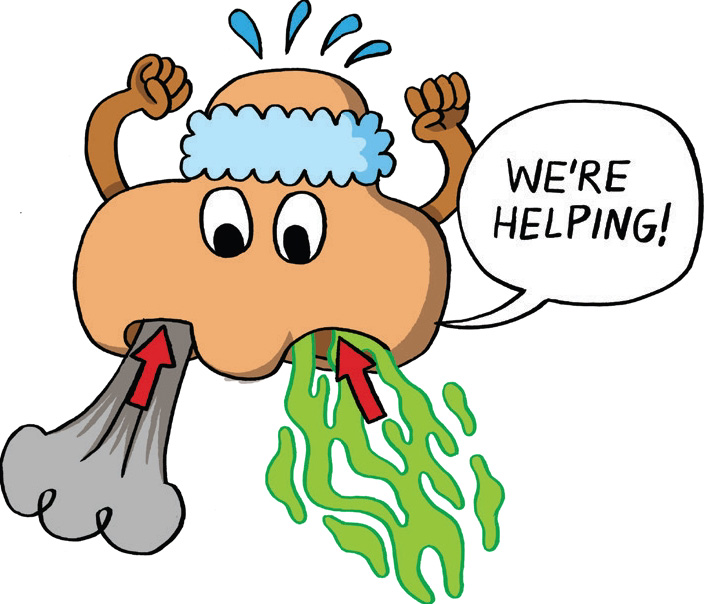
Nostrils are also called “nares.” To help you remember, pull the tip of your nose up with your finger, approach a friend or loved one, and in a panicked voice, say,“There are hairs in my nares (NARE-eez)!”
Why do we have two nostrils (nares) instead of one? When it comes to nostrils, smelling is a team sport. At any given time, one of your nostrils is working harder than the other, creating a sort of high-flow–low-flow situation. One nostril will sniff air faster than the other while simultaneously picking up different odor chemicals than the other nostril smelling the same thing.
